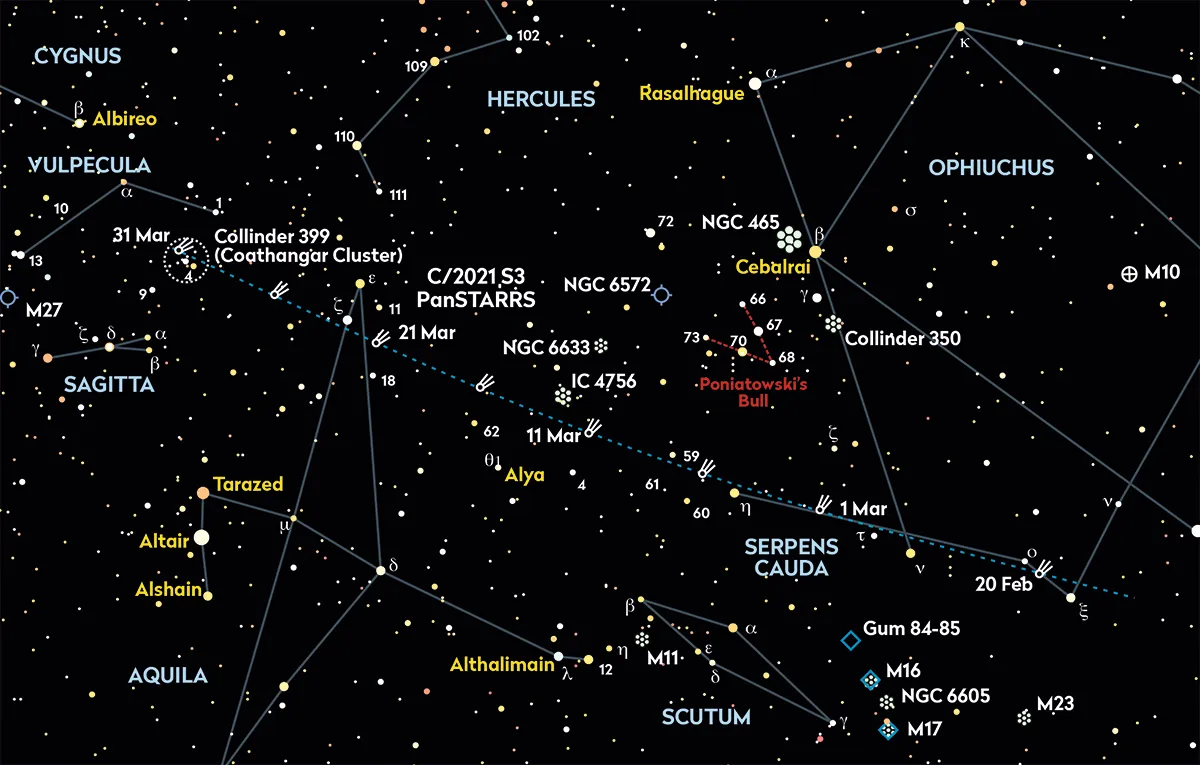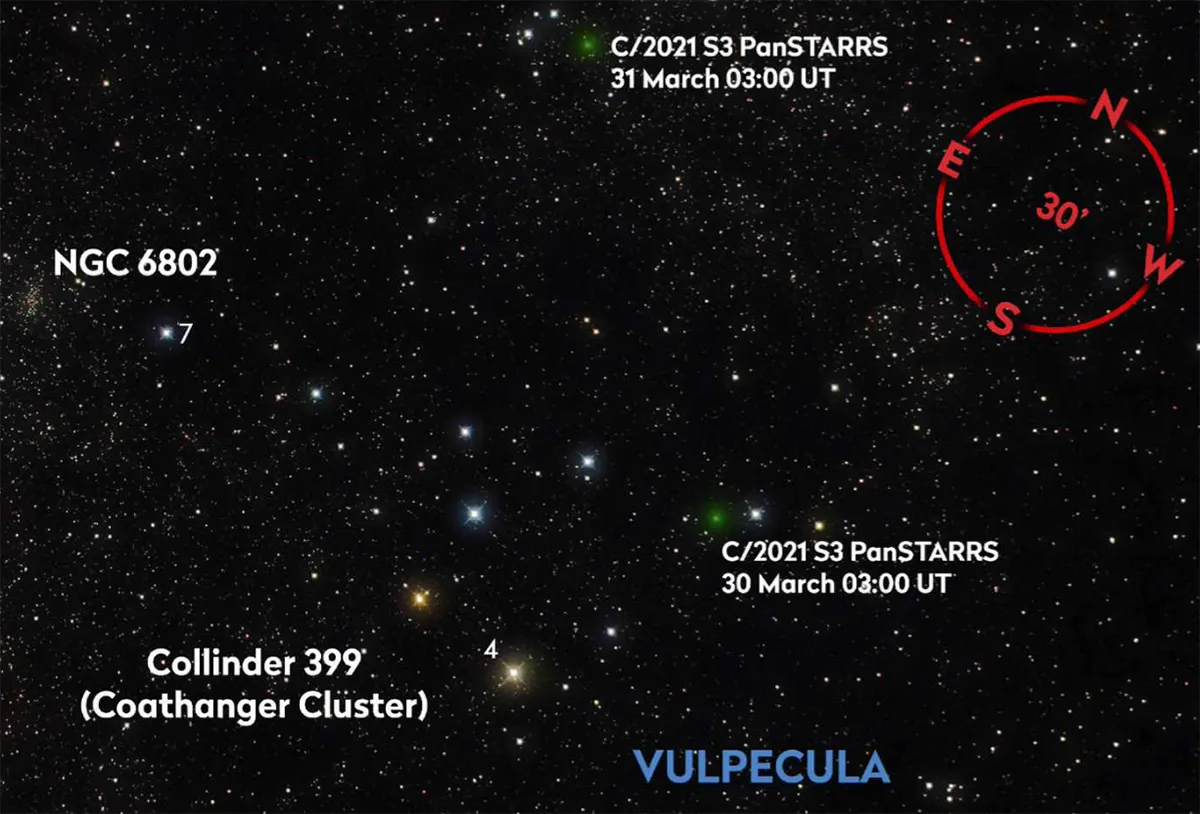Visible in the morning sky, comet C/2021 S3 PanSTARRS is predicted to shine at a binocular-friendly eighth magnitude throughout March 2024.
It's one of a group of bright comets in 2024 that really beg to be sought out and observed.
In March, C/2021 S3 PanSTARRS will pass through a part of sky more associated with summer than spring, heading north-northeast from Serpens Cauda through Aquila, Sagitta and finally into Vulpecula.
The comet's incursion into Vulpecula takes it across the deep-sky object known as Collinder 399, Brocchi’s Cluster or the Coathanger Cluster.
Despite its name, the Coathanger is an asterism rather than a true star cluster.
This region of sky does get to a decent altitude before dawn kicks in, so you should find there are plenty of opportunities to look for and follow the comet.
Planning to spot C/2021 S3 PanSTARRS? Capture an image with our guide on how to photograph a comet.

C/2021 S3 PanSTARRS key dates
On 1 March, you’ve got until around 05:00 UT before astronomical twilight begins and true darkness ends.
By the end of March, this occurs earlier at around 04:50 BST (03:50 UT).
On 1 March, C/2021 S3 PanSTARRS will be located in a region of sky that, at the start of dawn, has an altitude around 22° as seen from the centre of the UK.
By the end of the month, the comet is passing through the Coathanger Cluster.
Its altitude will have virtually doubled to around 40° while under true darkness.
Unusually for a comet, this one will be fairly well positioned and shouldn’t cause you too much stress to find!
There are several key nights that will help you find C/2021 S3 PanSTARRS if you’re having trouble locating it.
On the night of 3/4 March, it lies very close to mag. +3.2 Eta (η) Serpentis, moving into the vicinity of mag. +5.2 star 59 Serpentis in the early hours of 7 March.
On the mornings of 14 and 15 March, it sits 3.3° northwest of mag. +4.6 Theta (θ) Serpentis.
The Moon interferes in the last half of March, a key date being the morning of 22 March, when the comet sits close to mag. +3.0 Zeta (ζ) Aquilae.
The Coathanger crossing takes place between 29 and 31 March.

Comet vs the Moon
There is one fly in the ointment: the Moon. This will interfere with views of C/2021 S3 PanSTARRS from 18 March through to the end of the month.
At the early part of that range, the Moon will be on the other side of the sky and not too much of a nuisance.
At the end of that date range, try to grab the comet as soon as it’s above the horizon.
You may be able to locate it before the Moon has time to rise too high.
Bookmark our Moon phases and Moonrise times page to keep yourself updated.
Have you observed or managed to photograph the comet? Let us know by emailing contacus@skyatnightmagazine.com

